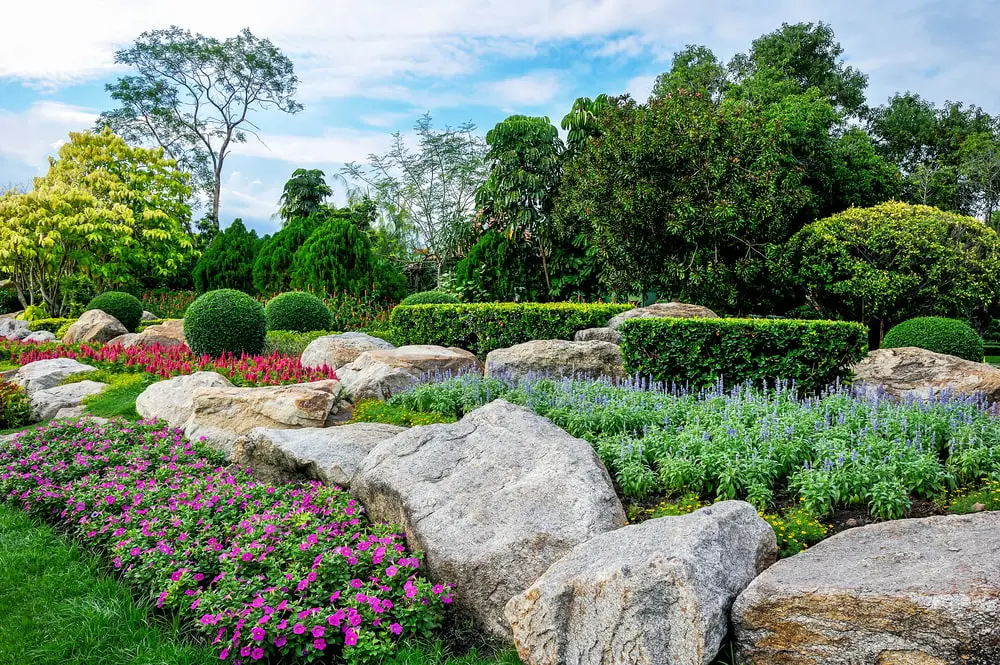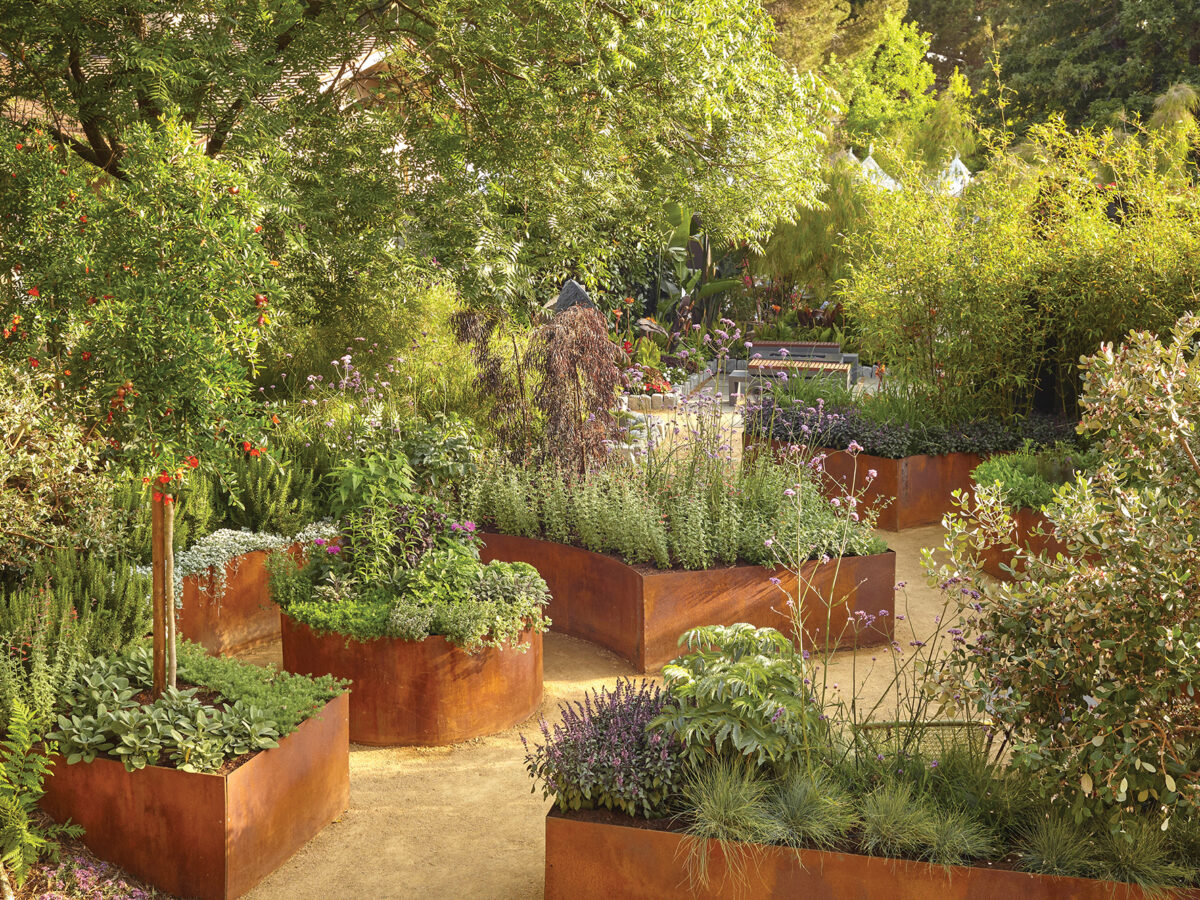Hilton Head Landscapes Can Be Fun For Everyone
Hilton Head Landscapes Can Be Fun For Everyone
Blog Article
What Does Hilton Head Landscapes Do?
Table of ContentsWhat Does Hilton Head Landscapes Mean?The Single Strategy To Use For Hilton Head LandscapesThe Best Guide To Hilton Head LandscapesThe Ultimate Guide To Hilton Head LandscapesExamine This Report about Hilton Head LandscapesThe smart Trick of Hilton Head Landscapes That Nobody is Talking AboutSome Known Facts About Hilton Head Landscapes.Getting The Hilton Head Landscapes To Work
Form compatibility is also a significant element of unity in designone or more strikingly different kinds are good for comparison and focus, but generally all other types need to have some resemblances for a merged look. Texture describes exactly how rugged or fine the surface of the plant or hardscape product feels and/or looks.
Examples of plants with coarse appearance include philodendrons, agaves, bromeliads, hollies, palms, and hydrangeas. Hardscape with crude texture includes rough-cut rock, rough-finished brick, and incomplete wood with knots and an increased grain. Matured or old construction product that maintains a weather-beaten surface is usually coarse in appearance. Characteristics that produce fine texture consist of tiny vegetation; thin, strappy leaves (yards) or tall, thin stems; small, dense twigs and tiny branches; long stems (creeping plants); and tiny, fragile flowers.
Fascination About Hilton Head Landscapes
Many plants are moderate structure, because they can not be described as having either crude or fine texture. They are identified by medium-sized fallen leaves with straightforward shapes and smooth sides. The average-sized branches are not densely spaced nor commonly spaced, and the total type is generally rounded or mounding. Medium-textured plants act as a background to web link and combine the coarse- and fine-textured plants.

To make an area feel smaller, position the rugged structures along the outer border and the fine appearances closest to the viewer. The information of the coarse texture makes the plants appear closer and makes the area feel smaller sized. The viewed structure of plants can likewise transform with the distance from the plant.
Some Of Hilton Head Landscapes
Vibrant shades enhance the comparison and make the structure show up coarser, while muted colors can flatten appearance. Hardscape with a rugged texturesuch as extremely harsh rocks and bold, huge timberstends to make all plant material show up extra medium distinctive. Developers often establish a texture study (Figure 8) theoretically to aid choose the setup of plant products.
Color in plant product and hardscape includes passion and selection to the landscape. Color is the most noticeable element in the landscape and is usually the focus of the majority of property owners; however, it is additionally the most short-term component, typically lasting just a few weeks a year for private plants.
What Does Hilton Head Landscapes Mean?
A basic summary of the shade wheel consists of the 3 key shades of red, blue, and yellow; the three secondary shades (a mix of two primaries) of eco-friendly, orange, and violet; and six tertiary colors (a mix of one adjacent primary and additional shade), such as red-orange. Shade theory clarifies the relationship of colors to every various other and exactly how they must be made use of in a structure.

Analogous (in some cases called unified) color design are any type of 3 to five shades that are nearby on the color description wheel, such as red, red-orange, orange, yellow-orange, and yellow, or blue, blue-violet, and violet (bluffton landscaping). The colors belong to each various other due to the fact that they commonly include two primaries mixed to develop a secondary and two tertiary colors, which indicates they share usual residential or commercial properties
They tend to have high comparison between them. One of the most typical collections are violet and yellow, red and green, and blue and orange. Corresponding shades are typically found naturally in blossoms; an usual pair is yellow and violet. Color is found in the flowers, foliage, bark, and fruit of plants.
More About Hilton Head Landscapes
Eco-friendly vegetation in all its different shades is the dominant shade by amount, yet other shades capture attention quicker due to their high comparison to the shade eco-friendly. Color is also discovered in structures, rocks, pavers, timber, and furnishings. The majority of colors in natural products, such as rock and wood, are commonly low-key and have a tendency to be variations of brownish, tan, and pale yellow.
Shades have residential properties that can impact emotions, spatial perception, light high quality, balance, and focus. Awesome shades tend to be soothing and should be made use of in locations for relaxation and tranquility.
Hilton Head Landscapes for Beginners
Cool colors have a tendency to recede and are viewed as being further away, making a room really feel larger. Shade can additionally be utilized to record interest and straight views.
Bright yellow, which has the highest strength, additionally has a high comparison with all other colors (usually defined as a "pop" of shade) and must be used moderately. A percentage of intense shade has as much visual weight as a big quantity of an extra subdued or weak shade.
Similar (often called harmonious) color pattern are any kind of three to five shades that are adjacent on the shade wheel, such as red, red-orange, orange, yellow-orange, and yellow, or blue, blue-violet, and violet. The shades relate to every other since they usually consist of two primaries blended to form a secondary and 2 tertiary shades, which means they share common residential properties.
Get This Report on Hilton Head Landscapes
They often tend to have high comparison between them. One of the most usual sets are violet and yellow, red and green, and blue and orange. Corresponding colors are usually found naturally in flowers; a common set is yellow and violet. Shade is found in the blossoms, vegetation, bark, and fruit of plants.
Environment-friendly foliage in all its different tones is the dominant shade by quantity, but other shades record attention extra readily as a result of their high contrast to the color eco-friendly - bluffton landscaping - https://yoomark.com/content/family-owned-and-operated-hilton-head-landscapes-has-been-serving-beaufort-county-over. Color is also located in structures, rocks, pavers, timber, and furnishings. Most colors in all-natural materials, such as rock and wood, are normally low-key and often tend to be variants of brown, tan, and pale yellow
The Ultimate Guide To Hilton Head Landscapes
Shade is an important component for producing passion and variety in the landscape. Shades have buildings that can affect emotions, spatial understanding, light quality, equilibrium, and emphasis. One home of color is described family member to temperaturecolors seem cool or warm and can impact feelings or sensations. Awesome colors have a tendency to be relaxing and should be used in areas for relaxation and calmness.
Cool shades tend to recede and are regarded as being further away, making an area really feel bigger. Color can likewise be utilized to catch attention and straight sights - https://www.evernote.com/shard/s563/client/snv?isnewsnv=true¬eGuid=1e365ff6-e90f-5b32-865b-7a0163278940¬eKey=WMpad8EffXMzZ5zVbKh55ighv_QXiQiEI-36W9DPCJIyrKOC77LuSHU77A&sn=https%3A%2F%2Fwww.evernote.com%2Fshard%2Fs563%2Fsh%2F1e365ff6-e90f-5b32-865b-7a0163278940%2FWMpad8EffXMzZ5zVbKh55ighv_QXiQiEI-36W9DPCJIyrKOC77LuSHU77A&title=Transform%2BYour%2BOutdoors%2Bwith%2BHilton%2BHead%2BLandscapers.
For instance, intense yellow, which has the greatest intensity, also has a high contrast with all other shades (usually referred to as a "pop" of color) and must be utilized sparingly. A little amount of extreme shade has as much aesthetic weight as a big amount of an extra restrained or weak shade.
Report this page